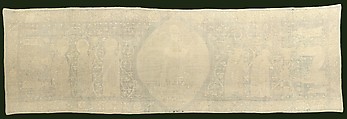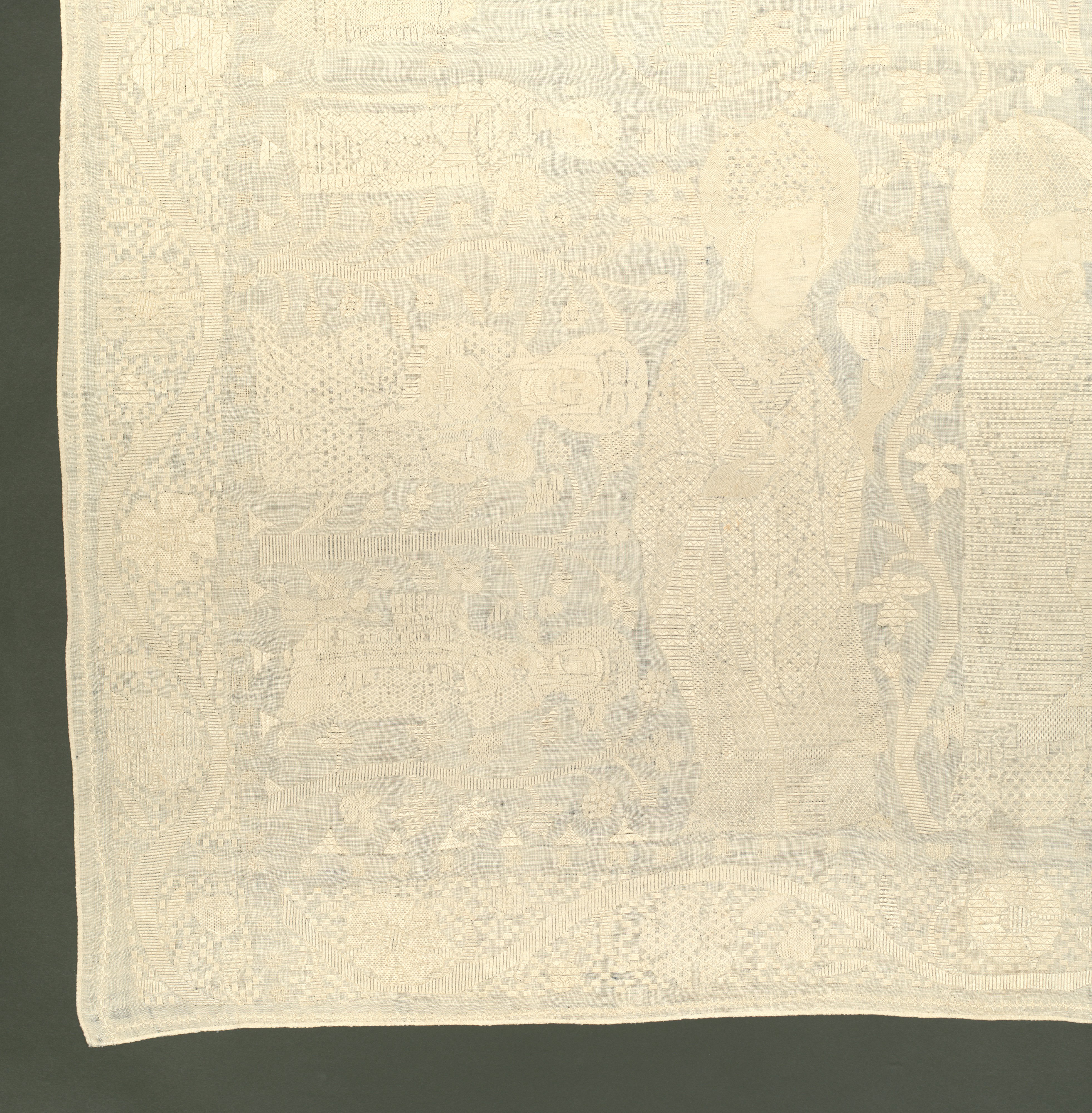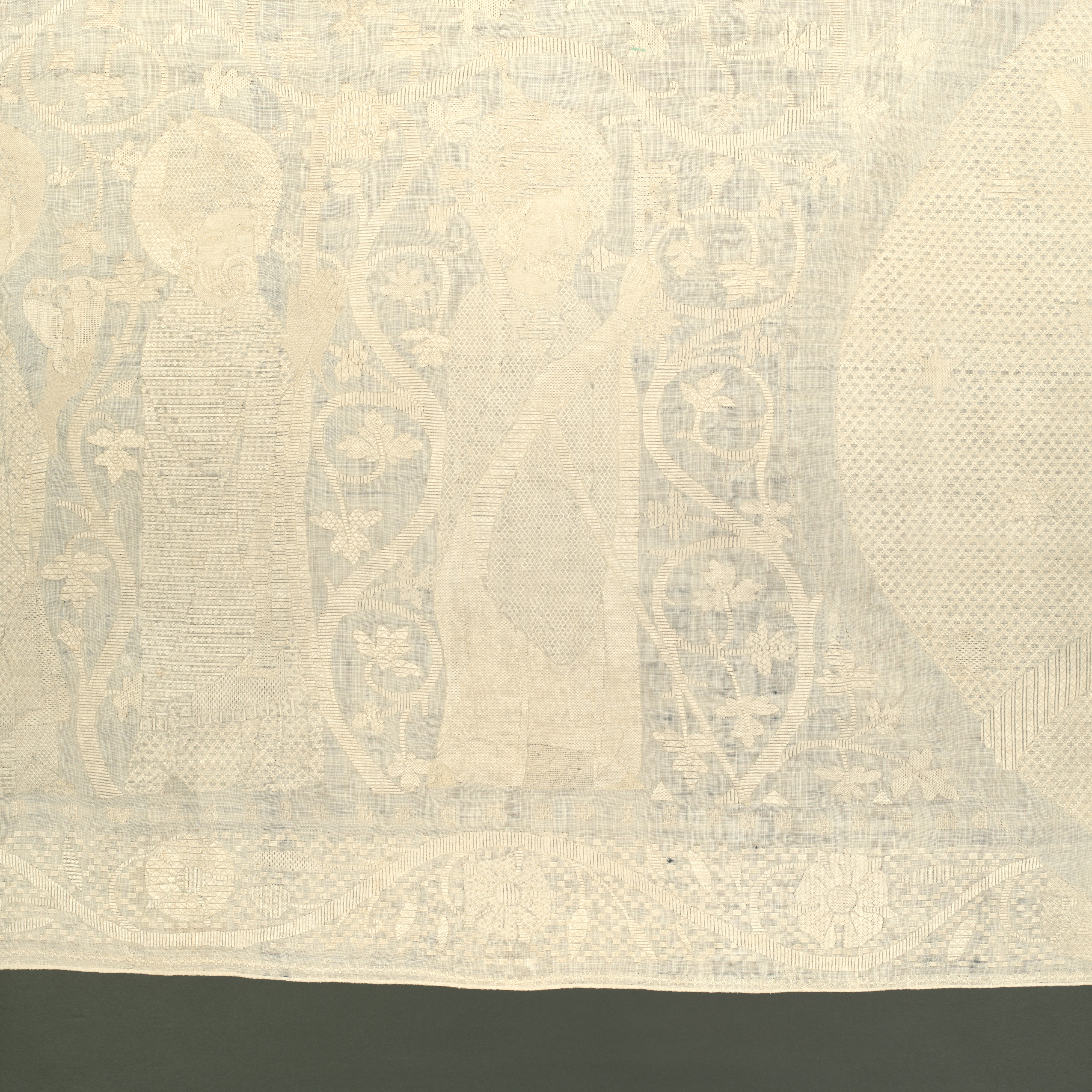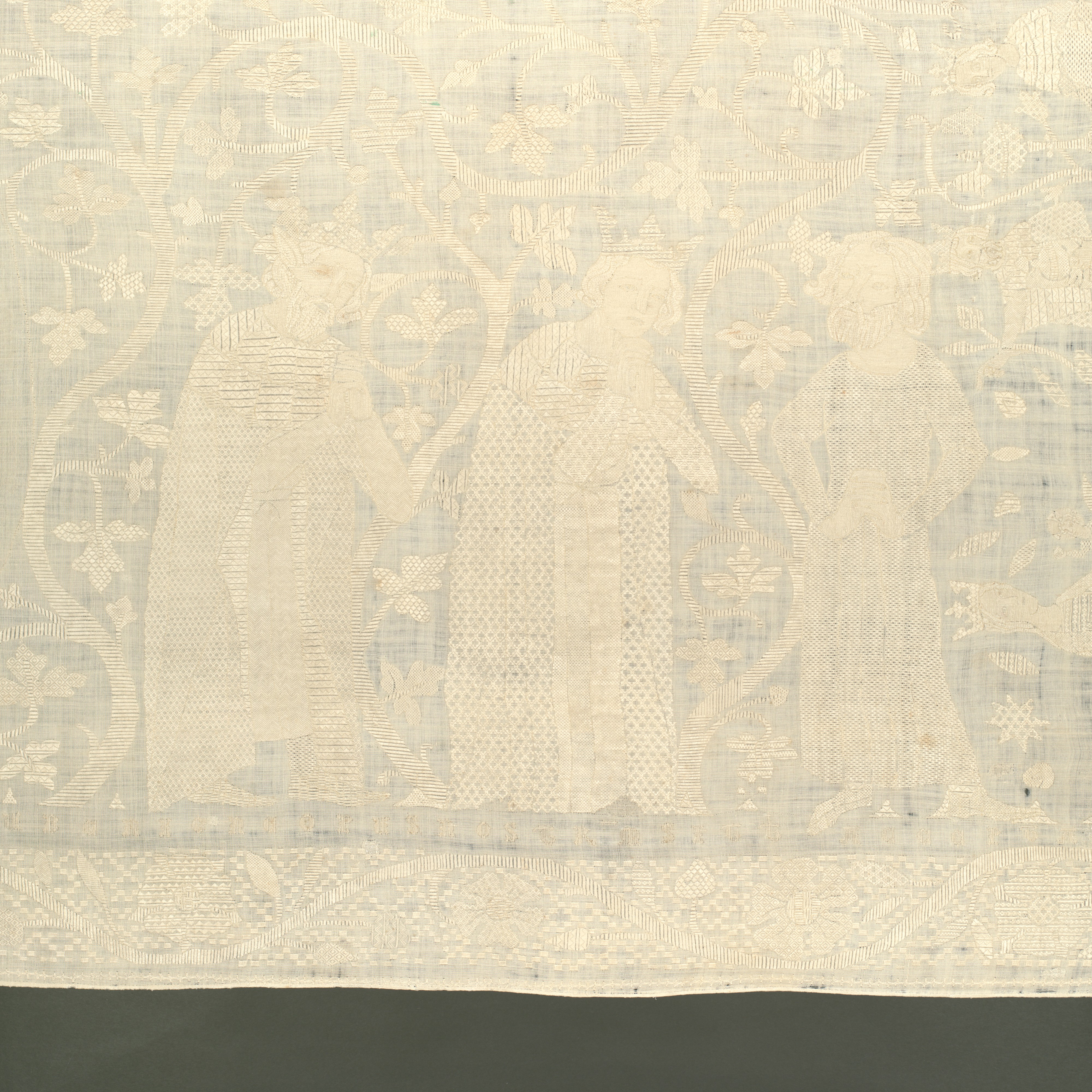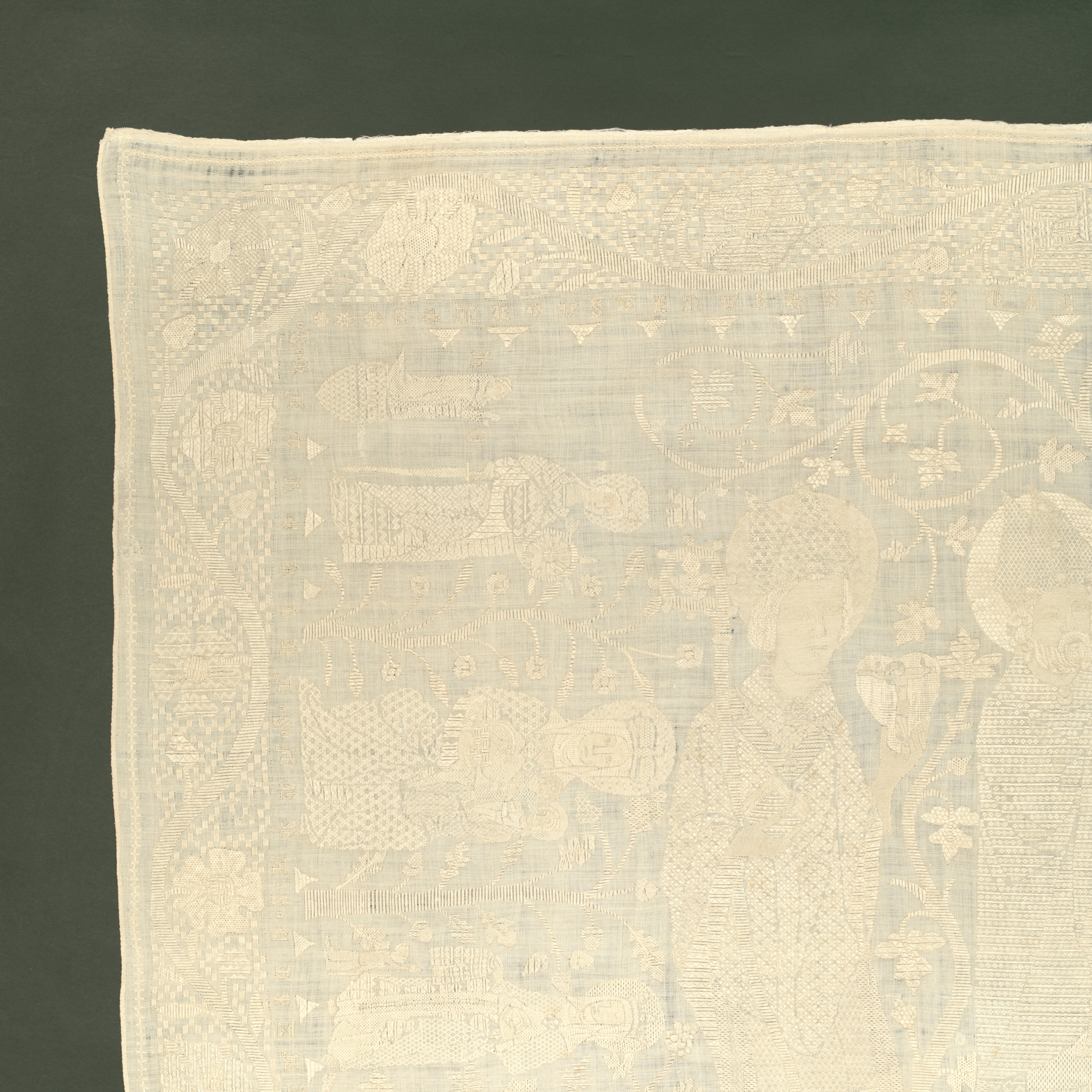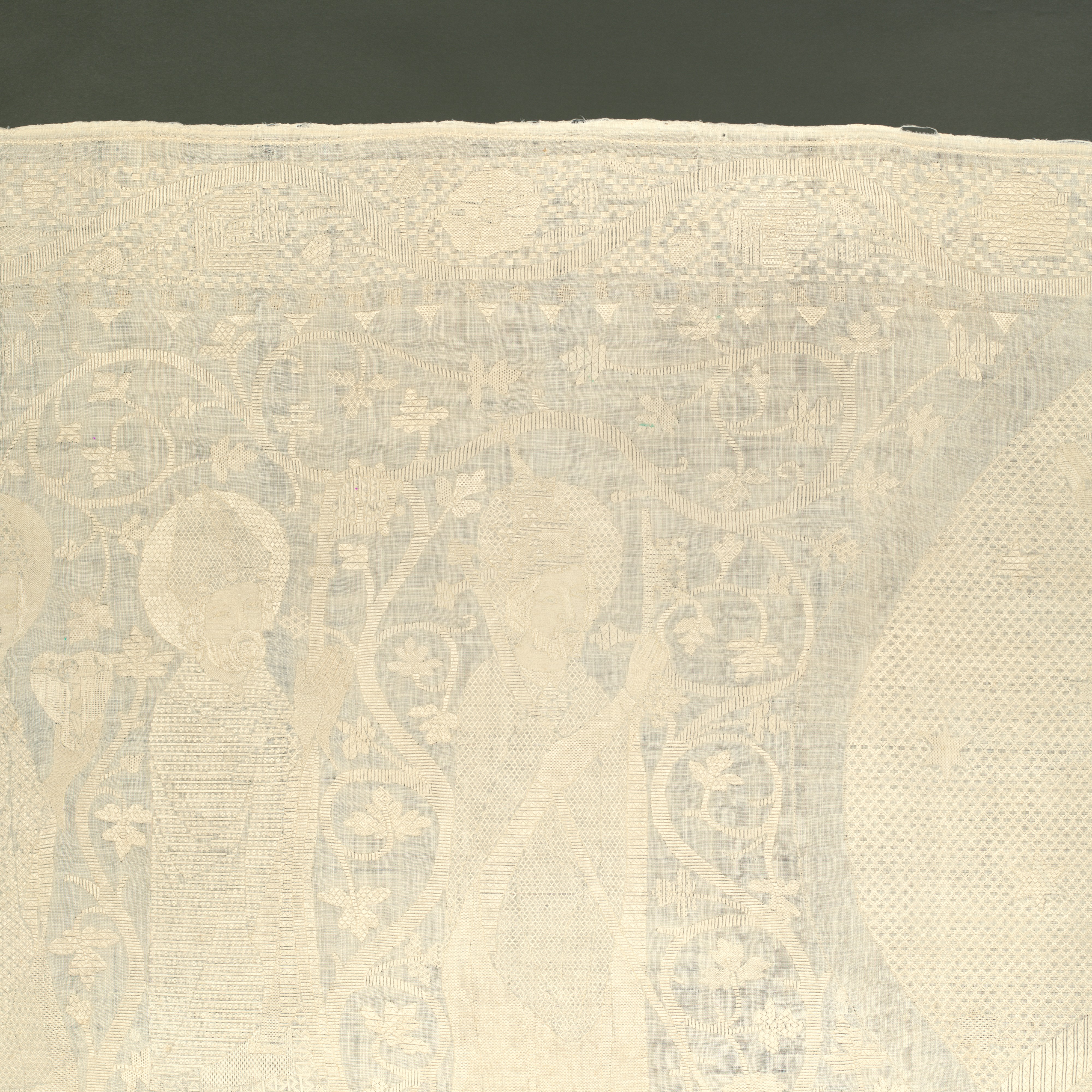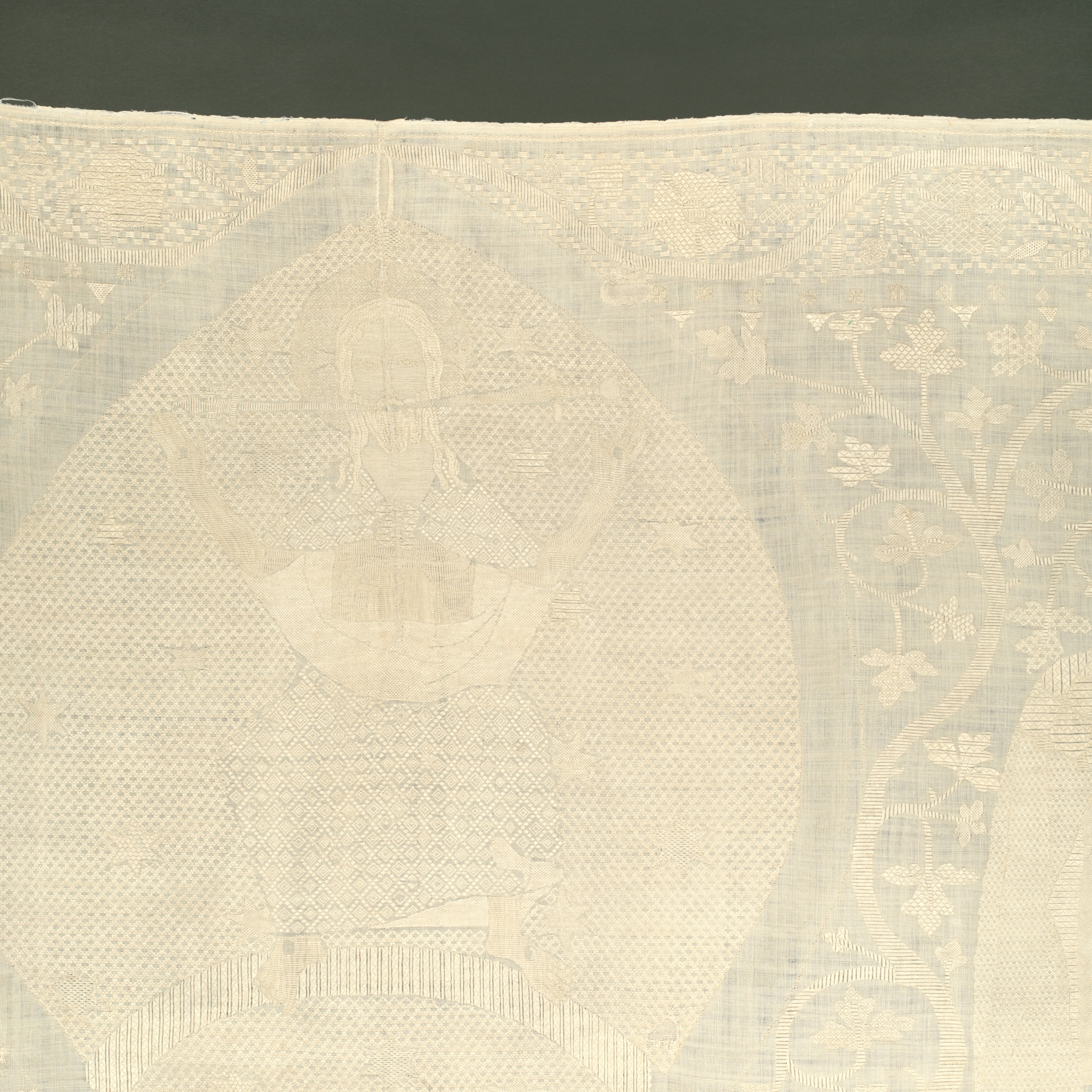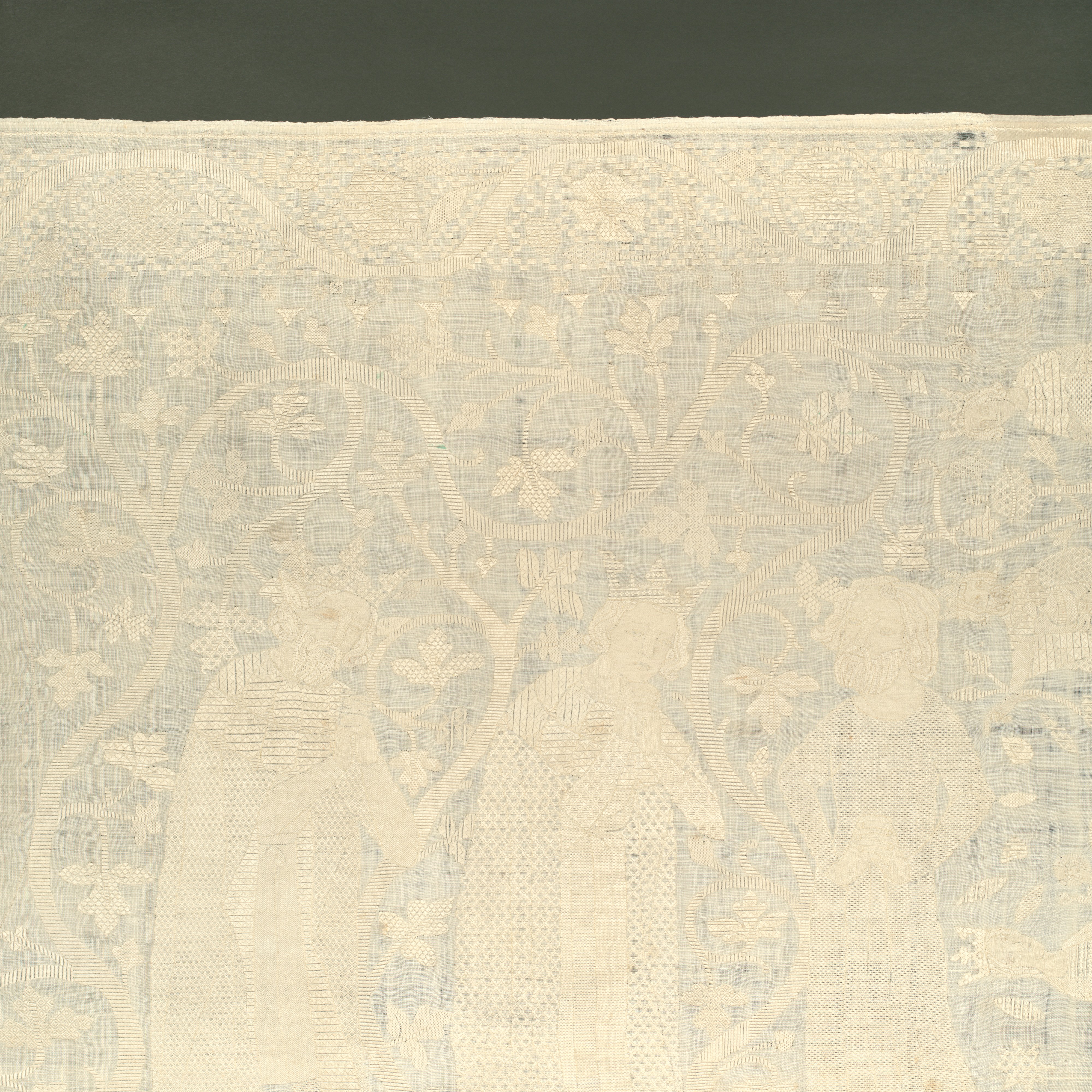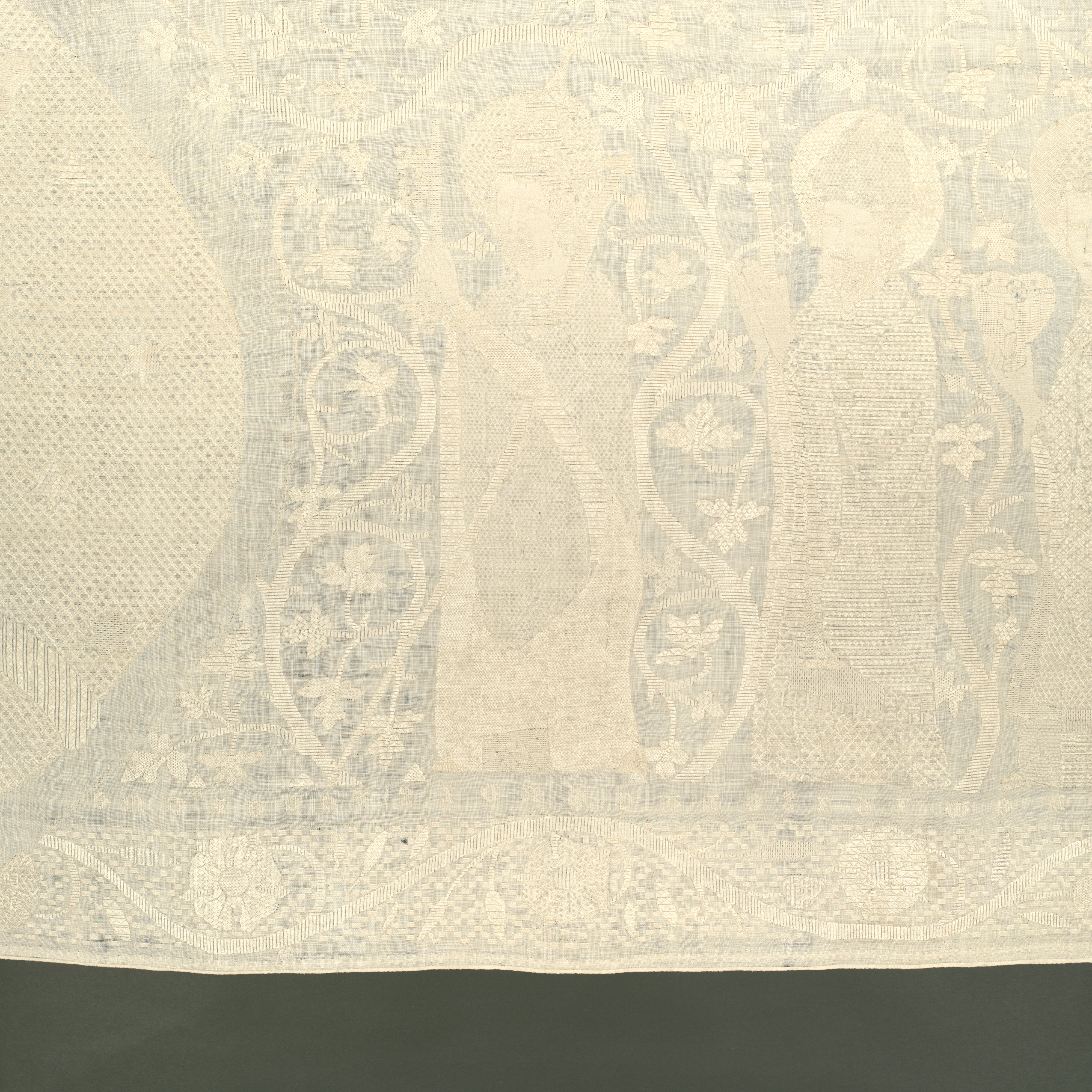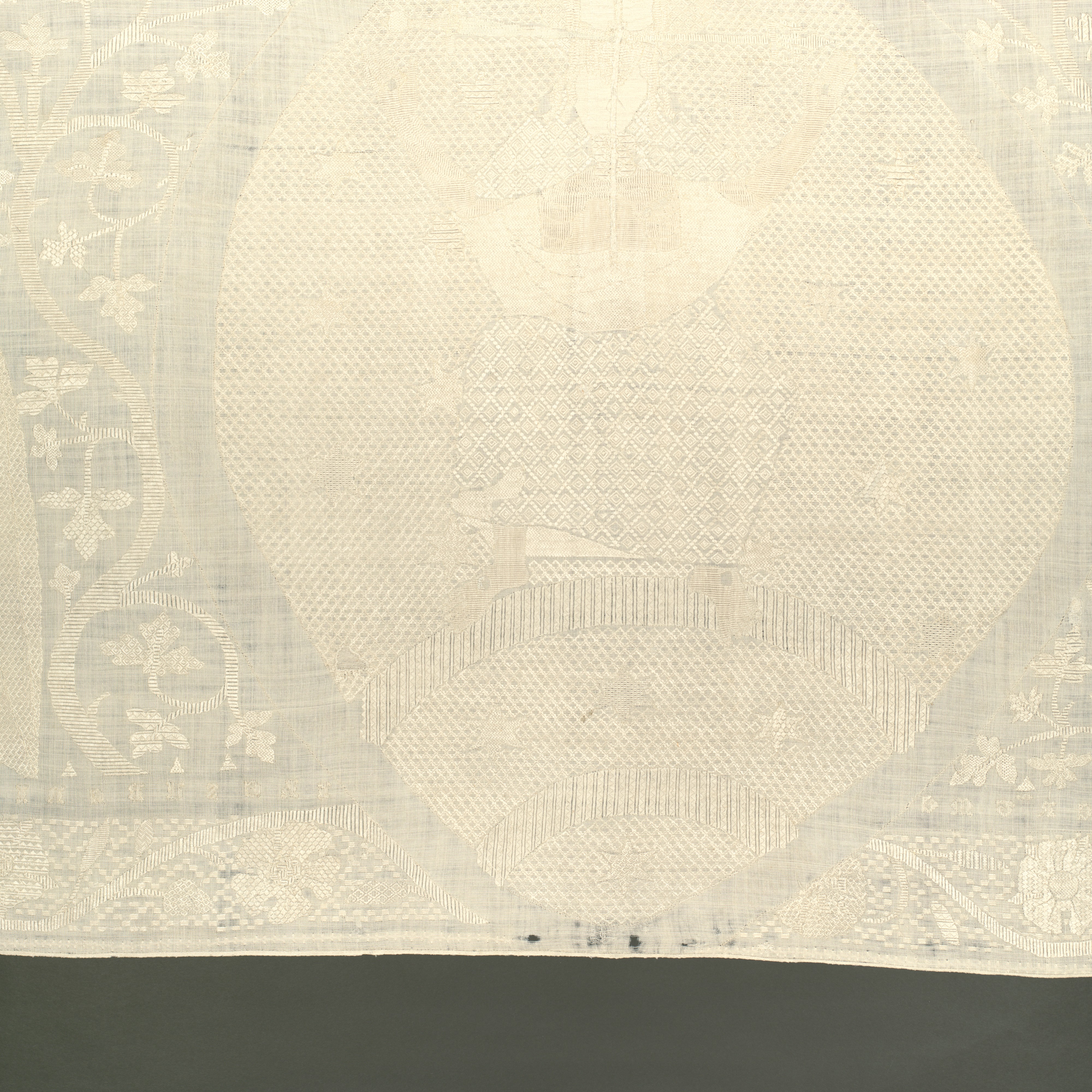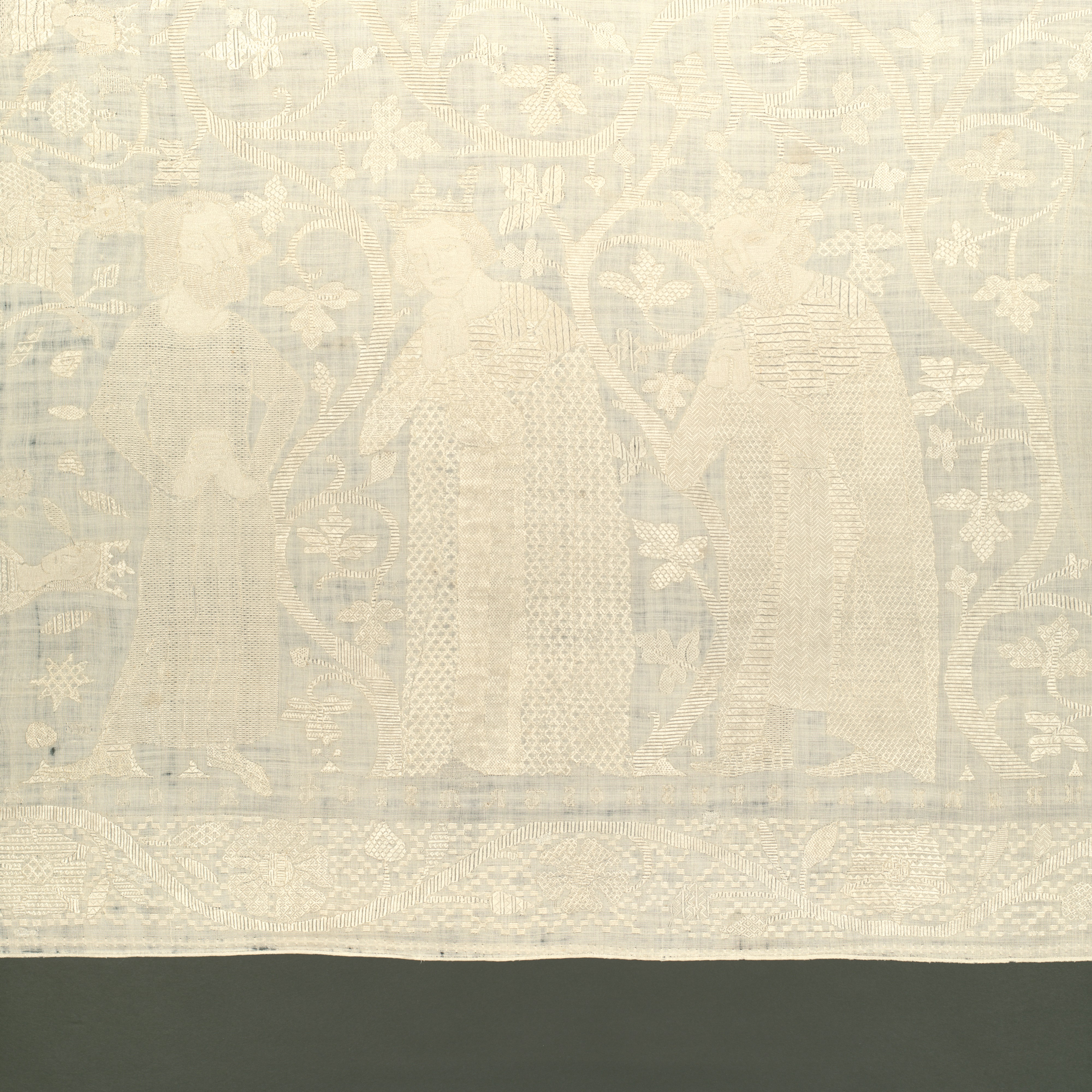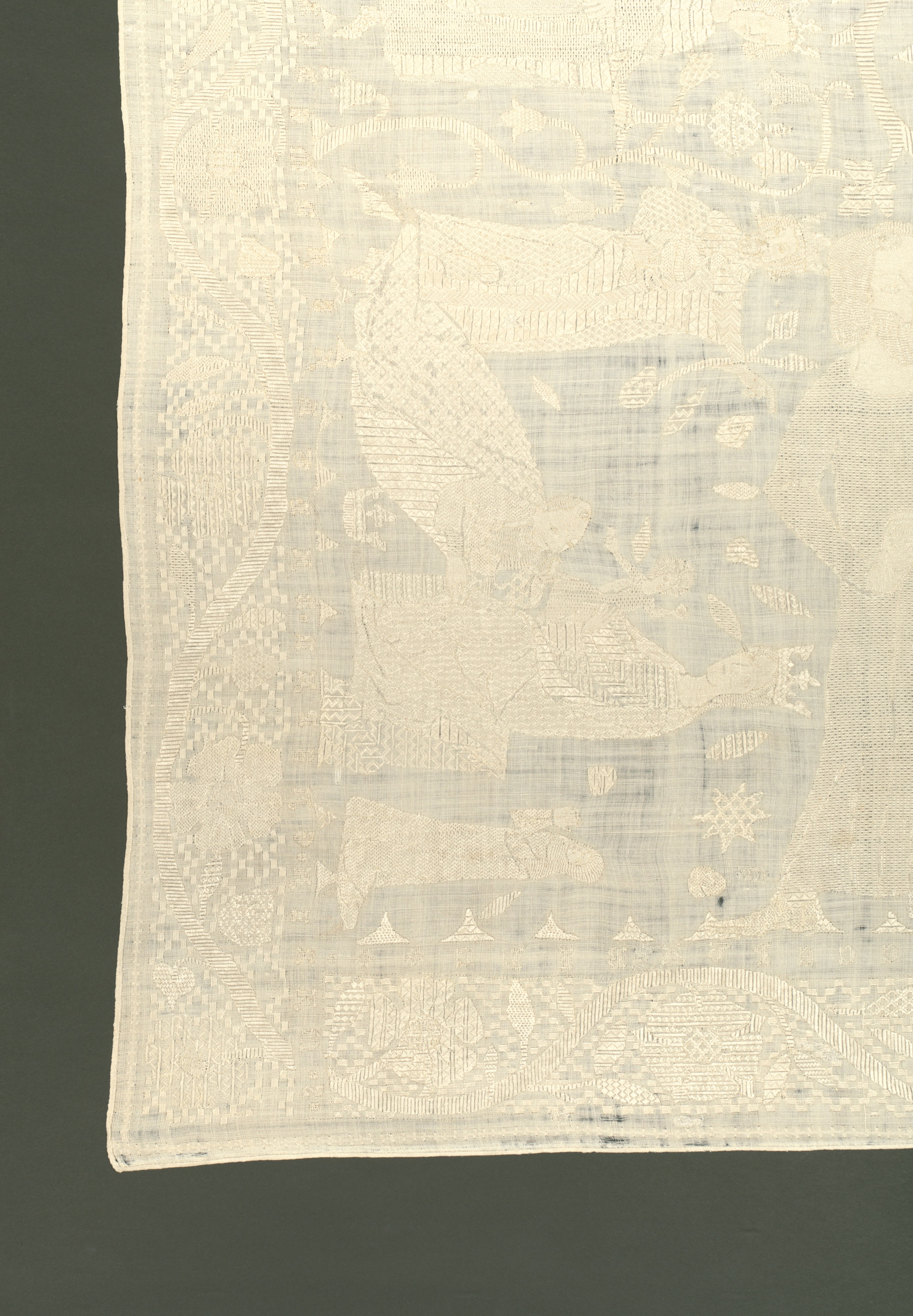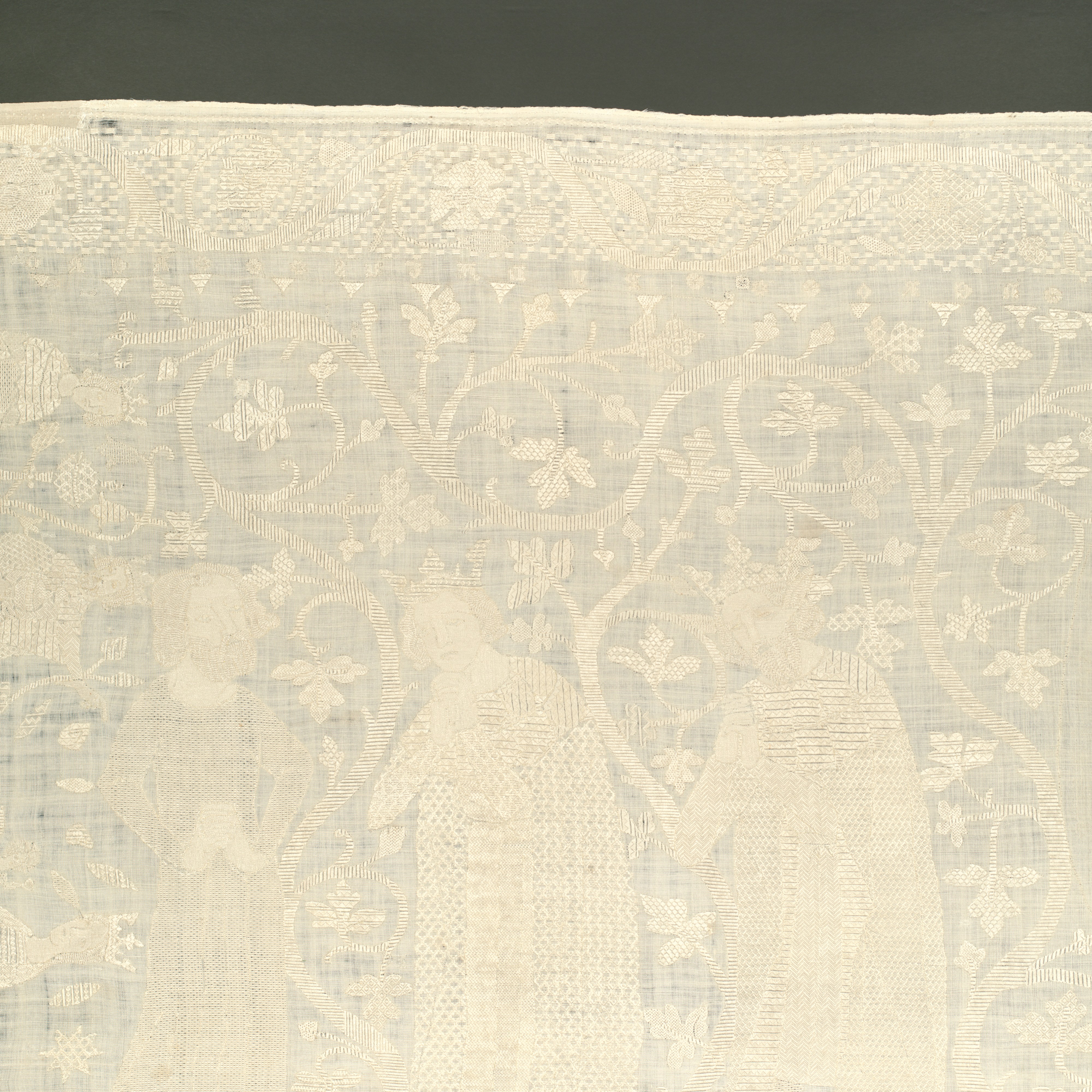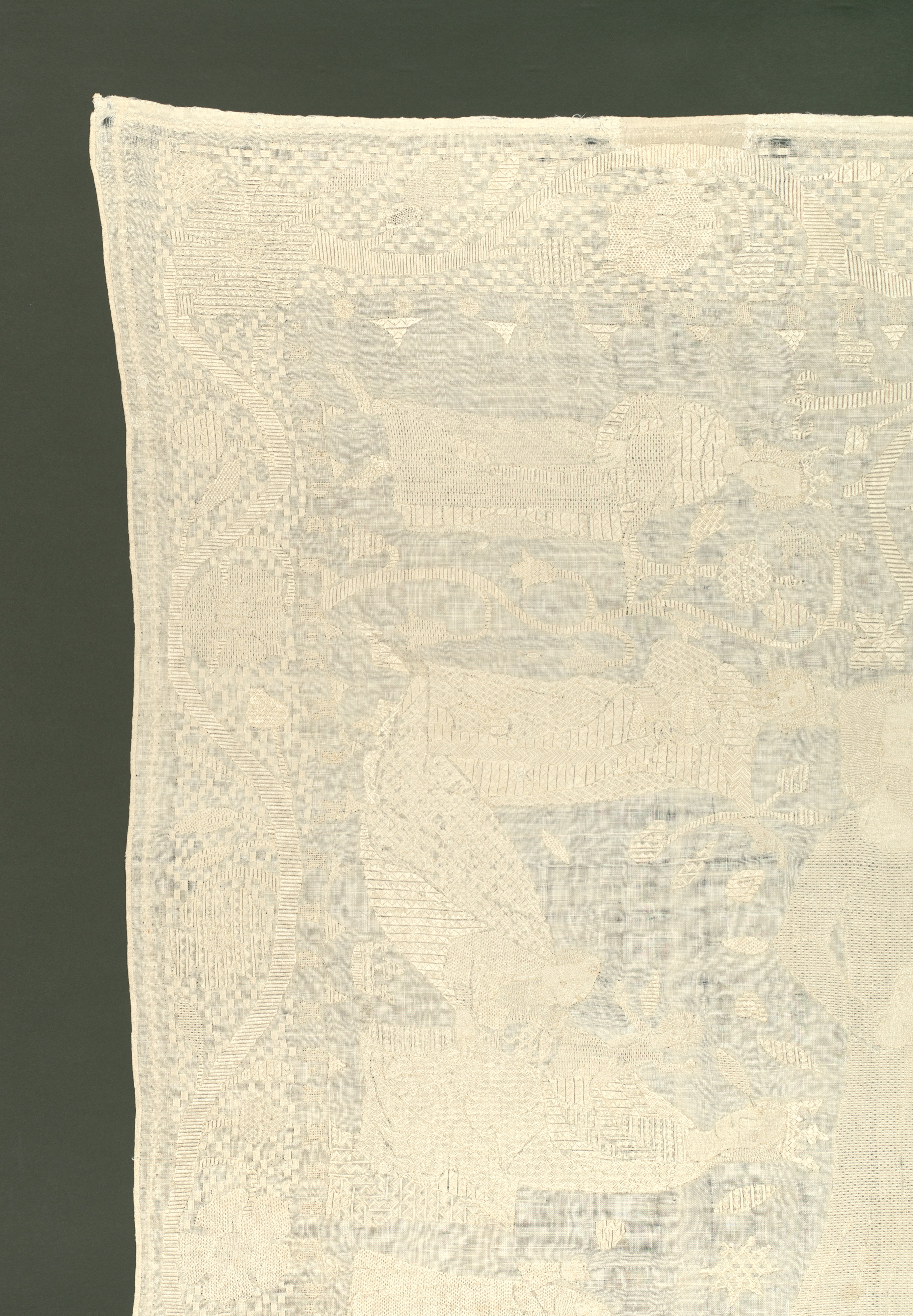Altarcloth
Sophia, Hadewigis, and Lucardis
Not on view
The Adoration of the Magi appears on one end of this exceptionally large, well-preserved altar covering from the convent of Altenberg, not far from Trier in Germany. Christ as judge; Saint Elizabeth of Hungary and Thuringia, mother of a thirteenth-century abbess of Altenberg; and Saint Nicholas, patron saint of the convent, are among the other figures represented in richly textured embroidery. A monk in their company kneels on a coat of arms identified as that of Henricus de Cronenberg.
An inscription in Latin names the nuns who served as needleworkers—Sophia, Hadewigis, and Lucardis—and invokes Jesus whit the prayer that their work be acceptable to him.
Linen was a cloth valued since ancient times. The Gospel accounts specify that the body of Jesus was wrapped "in fine linen." Linen became an important material in the service of the altar, more lustrous and less likely to soil than cotton. The nuns at Altenberg may have had an additional reason for creating this white-on-white embroidery; they were known as "white canons" because of the color of their habits. The embroidery is one of only a few that passed into private, and eventually, museum collections after the secularization of the convent by Napoleon in 1803.
Due to rights restrictions, this image cannot be enlarged, viewed at full screen, or downloaded.
This artwork is meant to be viewed from right to left. Scroll left to view more.
